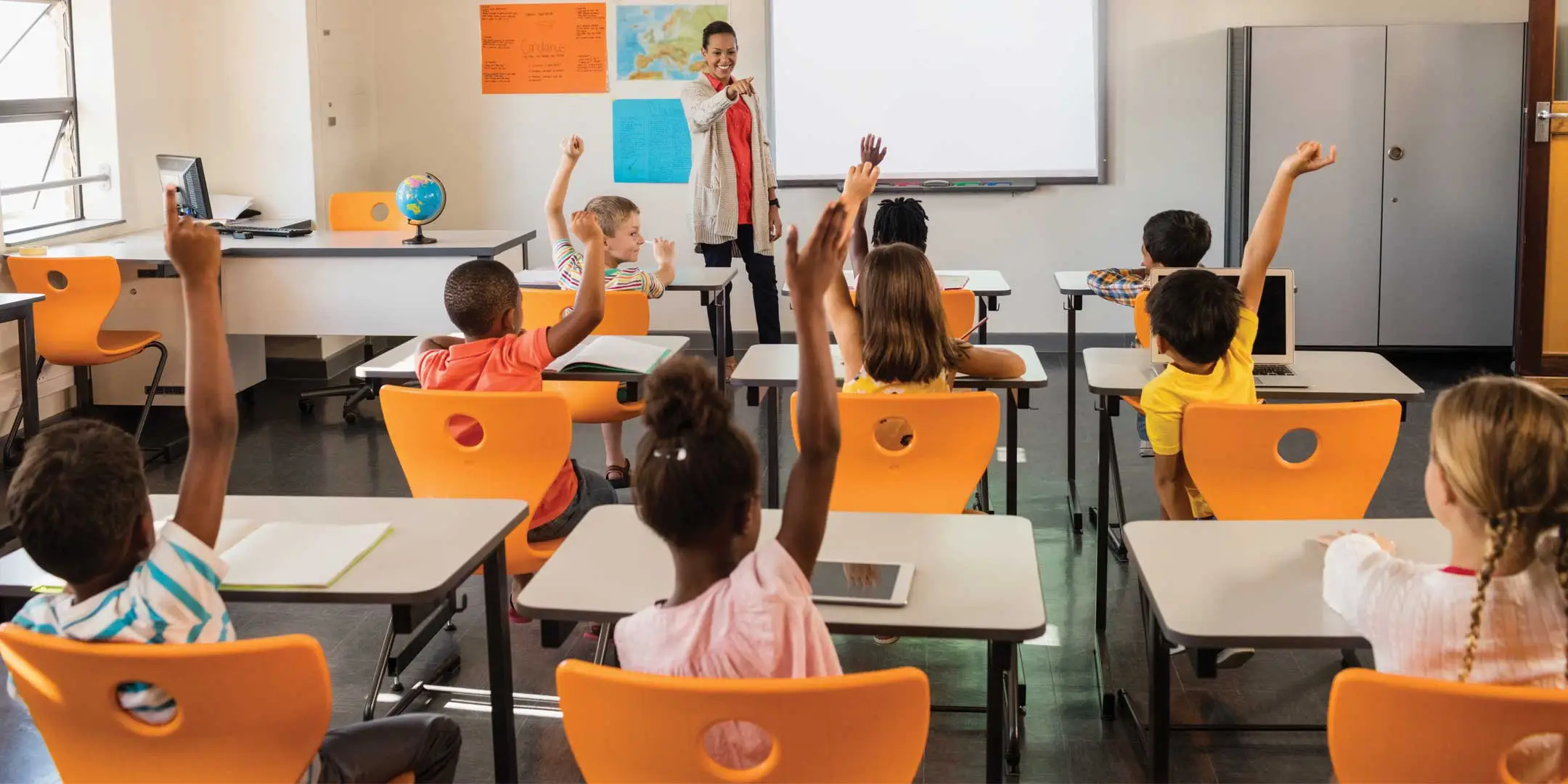Helpful or Hurtful? Gamification through a Conscious Discipline Lens
The term, “gamification” has been met with both enthusiasm and debate by educators and scholars across the country. The basic definition of gamification is “the application of typical elements of game playing (e.g. point scoring, competition with others, rules of play) to other areas of activity, typically as an online marketing technique to encourage engagement with a product or service.”
There is no question that the incorporation of gamification in the classroom encourages short-term, active participation and engagement from students. Teachers seeking to cultivate a School Family that focuses on intrinsic motivation and collaboration might wonder if a learning tool that relies heavily on competition and external rewards can mesh with their goals. To answer this question, we must first look at internal motivation, external motivation, and the impact of each on student wellbeing.
The Truth Behind the Effects of Intrinsic Motivation and External Rewards
When a student is intrinsically motivated, they are moved by their own desire to pursue or engage in an activity simply out of curiosity, enjoyment, or satisfaction. They engage because they want to. It feeds something in their soul. They learn to lean into their own knowing in a regulated body, acknowledge what they find there, and move through challenges in a way that empowers them to believe that they, “can do it.” The data show that students who are intrinsically motivated are more successful and lead fuller lives in the long-term.
The use of external rewards relies on incentives outside of personal fulfillment such as stickers, trips to the treasure box, grades, badges and other tangible rewards. Things like stickers and “special days” such as pajama days or Wacky Wednesdays can be enjoyed in non-reward ways when not linked to a specific behavior; the “external reward” concept comes into play when it is tracked to behaviors or grades. When used as a motivator, they tend to provide external gratification, breed negative competition, and perpetuate a mindset of “what do I get” over one of accomplishment.
While effective in the short-term, there have been a plethora of studies that show how external reward systems can negatively impact students’ motivation and may, in fact, shine a bigger spotlight on penalties for “bad” behavior rather than encouraging “good” behavior. Research shows that moving away from traditional systems of rewards and punishments can improve school culture and climate, intrinsic motivation, and overall enjoyment; ultimately leading to better academic outcomes.
Does Gamification Promote Intrinsic Motivation or Prioritize External Rewards?
How gamification affects students relies on how instructors and teachers present its use in a classroom setting and on each individual student. In this academic article, the results seem inconclusive about its benefits, and differ based on student preference. “The gamification of education can enhance levels of students’ engagement similar to what games can do, to improve their particular skills and optimize their learning. On the other hand, scientific studies have shown adverse outcomes based on the user’s preferences.”
If set up without any introduction or modeling of the benefits of intrinsic motivation first, the prioritization of external rewards may override the benefits. Positive effects may be short-term, without lasting change.
Consider this example: A teacher introduces the gamification of historical facts in a secondary classroom. The teacher decides to use an external reward of a homework pass to the highest scorer. It is motivational on the onset, but the reward is the focus, and the motivation lasts only as long as the homework pass does. While students may retain the knowledge of some historical facts, they are even less engaged outside of the use of the gamification setting because their intrinsic motivation has not been activated.
This is a Factory Model, or a traditional system built on rewards and punishments based on presenting behavior. However, if gamification is used with the School Family model, the emphasis is placed on connection and belonging rather than competitive individualism, providing fertile ground for intrinsically motivated students. This establishes a safe and healthy environment where students can access the maximum benefits of gamification. It encourages their application of the Power of Unity rather than focusing on external rewards and competition. The learning within the game becomes more relevant and longer lasting.
Replacing External Rewards with Intrinsic Motivation Through Thoughtful Gamification
John McCarthy from Edutopia exposes the intrinsic properties linked to gamification. “In education, gamification is intended to transform traditional lessons into an enhanced learning experience where students choose to explore and practice content, earning badges and status benefits. These might seem extrinsic, but the true rewards come from the students’ internal drive to study content, gain depth of understanding, and master material that leads to badges, achievements, and status.” John goes on to describe that student success does not actually come from rewards within the game, but from how the learning journey is uniquely designed for the student. “Combining game mechanics with intentional exploration of aligned content will result in students’ participating willingly.”
The use of gamification can deepen engagement, problem-solving skills, and understanding within a classroom setting, and lead to a sense of connection and belonging when we place the focus on intrinsic motivation.
Ways to replace external rewards with intrinsic motivators:
- Collect data on student interests and incorporate them to increase engagement.
- Elevate student choice via student-led projects and project-based learning.
- Emphasize group work to build unity over competition when engaging with edtech tools such as Kahoot, Edpuzzle, Learning A-Z , SplashLearn and BrainPOP.
- Consider dedicating one day a week for a volunteer student to share one thing they loved to learn, building confidence, and speaking skills while affirming intrinsic motivation.
- Shift focus from curriculum to curiosity as often as you are able, leading to lifelong intrinsically motivated learners.
- Provide options when you can: Would a student prefer to write about a book or talk to a friend about it? Choice further ensures student motivation.
Gamification is an educational tool. Like all tools, it can cause both harm and good. It’s possible to promote the critical thinking skills, cooperation, and engaged learning that lead to long-term behavior modification using gamification in the classroom. It’s also possible to sacrifice these gains by entering with a traditional reward-based intent. Laying a solid foundation of curiosity, connection, and care within a School Family helps to cultivate the intrinsic motivation that leads to life-long learning, whether you include gamification in your curriculum.
Resources
Articles:
Rewards and Punishments Papers Supporting Conscious Discipline Framework
Webinars:
Products:
The New Conscious Discipline Book Expanded and Updated
Creating the School Family: Bully-Proofing Classrooms Through Emotional Intelligence
Upcoming Educator Events:
Ft. Lauderdale, FL Teacher Event
Palm Springs, CA Teacher Event
Teacher Event in Nashville, TN 2024
Teacher Event in St. Louis, MO 2024




